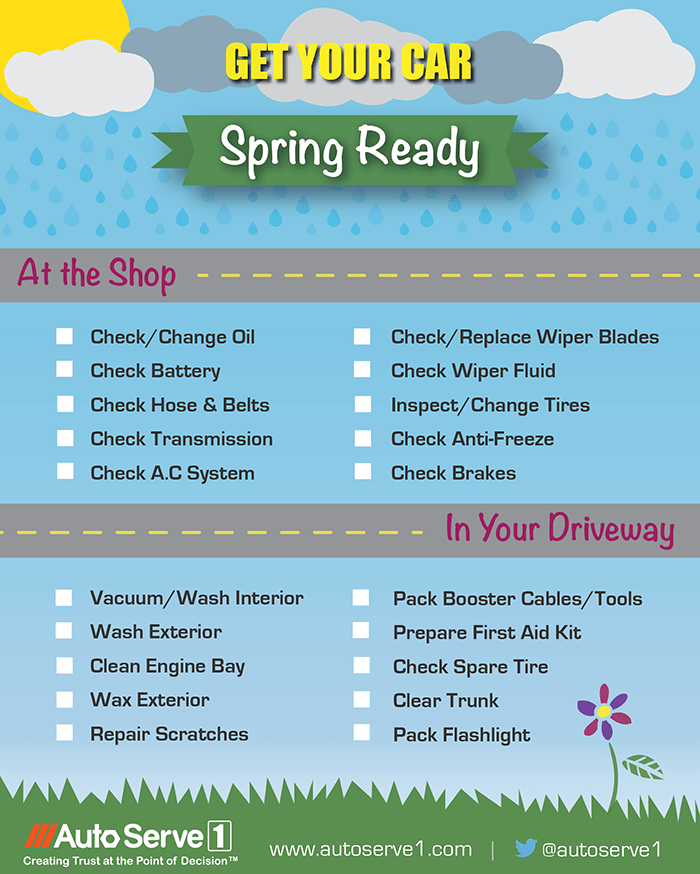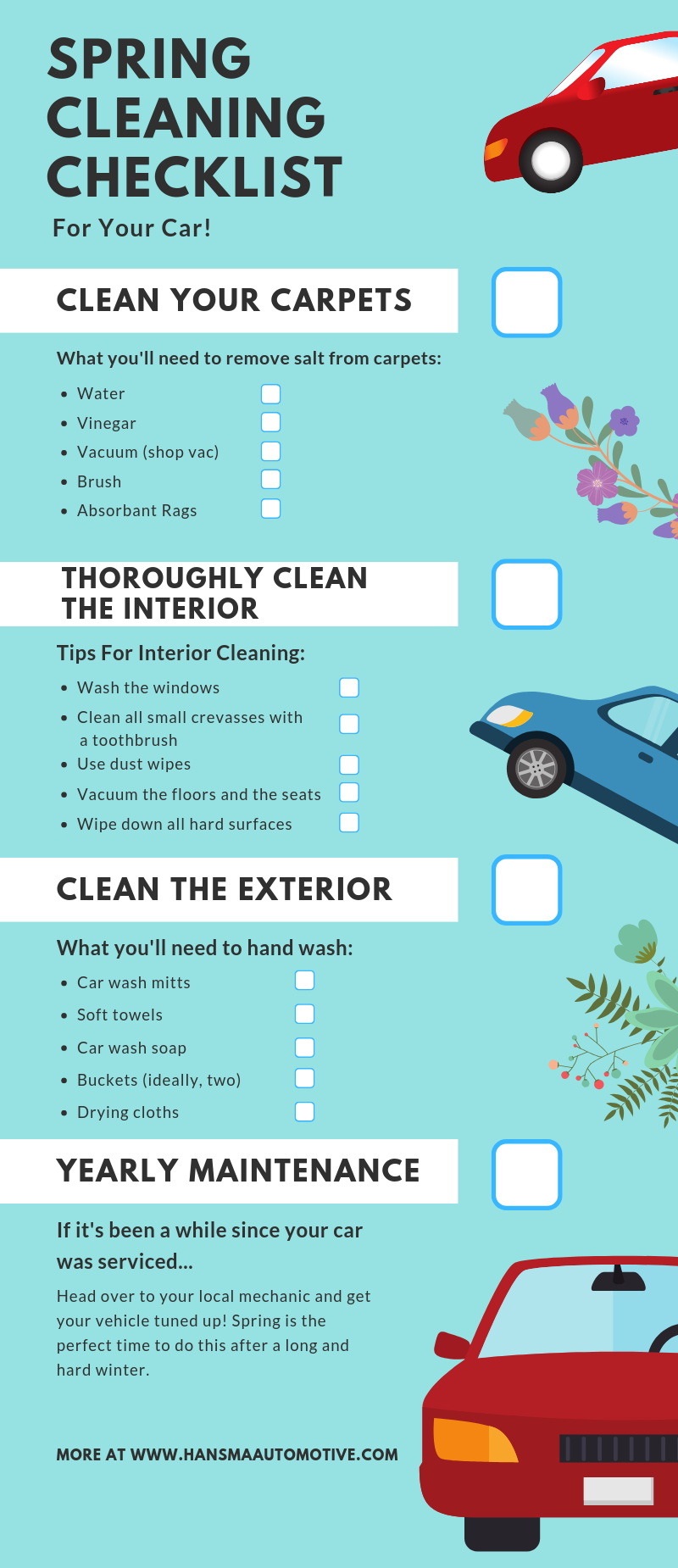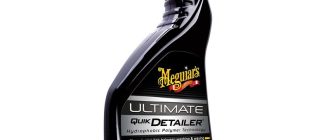
Spring Car Maintenance Tips to Keep Your Car on the Road
Regular maintenance is key to keeping your car running smoothly and ensuring its longevity. As the spring season arrives, it’s crucial to pay close attention to your vehicle’s needs and make necessary adjustments to ensure optimal performance.
Here are some essential spring car maintenance tips to keep your car in top shape:
1. Check Your Tires
Ensure that your tires are properly inflated and have sufficient tread depth. This will not only improve fuel efficiency but also enhance safety on the road.
2. Change Your Oil
Regular oil changes are essential for maintaining engine health. Spring is an ideal time to replace your oil, as it helps remove any contaminants that may have accumulated during the harsh winter.
3. Inspect Your Brakes
Springtime can be wet and slippery, so it’s important to have your brakes inspected. Make sure the pads, rotors, and brake fluid are in good condition to ensure optimal braking performance.
4. Check Your Battery
Winter weather can take a toll on your car battery. Check the battery terminals for corrosion and ensure it is providing adequate voltage. If necessary, get your battery tested and replace it if it’s old or weak.
5. Clean and Polish
Spring is the perfect time to give your car a thorough cleaning inside and out. Remove any winter grime and road salt from the exterior, and vacuum and wipe down the interior. Polish the paint to protect it from the upcoming sunny days.
By following these essential spring car maintenance tips, you can keep your vehicle running smoothly and enjoy a safe and comfortable ride throughout the season.
Importance of Spring Car Maintenance
Spring is an ideal time to focus on your car’s maintenance to ensure it runs smoothly on the road. Ignoring regular maintenance can lead to costly repairs and safety hazards. Here are some important tips to keep your car in top shape:
- Change Your Oil: Regular oil changes are essential for keeping your car’s engine running smoothly. Spring is the perfect time to change your oil and replace the oil filter.
- Check Your Tires: Inspect your tires for adequate tread depth, proper inflation, and signs of wear and tear. Consider rotating the tires to ensure even wear and extend their lifespan.
- Inspect the Brakes: Brake pads and brake fluid should be checked regularly to ensure optimal braking performance. Spring is a good time to inspect brakes for any signs of wear or damage.
- Replace Wiper Blades: Winter weather can take a toll on your wiper blades. Replace them in the spring to ensure clear visibility during spring showers.
- Check the Battery: Extreme temperatures can affect the performance of your car battery. Test the battery and clean the terminals for optimal functioning.
- Inspect the Cooling System: Ensure that the coolant levels are proper and the radiator is functioning correctly to prevent overheating during the warmer months.
Taking care of these maintenance tasks in the spring will help keep your car running smoothly and avoid unexpected breakdowns on the road. Don’t neglect your car’s maintenance – it will save you time and money in the long run.
Check Tire Pressure
As the spring season arrives, it’s crucial to focus on your car’s maintenance to ensure a smooth and hassle-free driving experience. One essential aspect of car maintenance is checking the tire pressure regularly.
Why is it important?
Keeping your tires properly inflated is crucial for various reasons:
- Safety: Maintaining the correct tire pressure improves traction, reduces the risk of accidents, and ensures proper handling of your vehicle.
- Fuel Efficiency: Properly inflated tires reduce rolling resistance, which can improve your car’s fuel efficiency and save you money.
- Tire Longevity: Overinflated or underinflated tires can wear out unevenly and prematurely, leading to costly tire replacements.
How to check the tire pressure?
Follow these simple steps to check and maintain the tire pressure:
- Invest in a reliable tire pressure gauge.
- Park your car on a level surface.
- Locate the recommended tire pressure for your specific vehicle. This information can usually be found on a sticker inside the driver’s side door jamb or in the owner’s manual.
- Remove the valve cap from each tire.
- Place the pressure gauge over the valve stem and press firmly to get a reading.
- If the pressure is lower or higher than the recommended PSI, add or release air accordingly.
- Repeat the process for all four tires.
Regular maintenance tip:
To ensure optimal tire pressure, check your tires at least once a month and before long trips. Additionally, remember to inspect the tires for any signs of damage or excessive wear.
|
|
Inspect Brakes and Brake Pads
When it comes to car maintenance, one of the most essential tasks is to inspect the brakes and brake pads. Keeping your brakes in good condition is crucial for your safety on the road. Here are some tips on how to inspect your brakes and brake pads this spring:
- Start by visually inspecting the brake pads. Look for any signs of wear such as thinning or unevenness. If the pads are less than 3mm thick, it’s time to replace them.
- Check the brake fluid level. Low brake fluid can affect the performance of your brakes. If needed, top up the fluid to the recommended level.
- Inspect the brake rotors for any signs of damage or excessive wear. The rotors should be smooth and free from any grooves or deep scratches.
- Listen for any unusual noises when applying the brakes. Squealing, grinding, or vibrations can indicate issues with the brake pads or rotors.
- Check the brake lines for any signs of leaks or damage. Damaged brake lines can lead to a loss of brake fluid and decreased braking performance.
- Test the brakes by applying firm pressure while driving at a low speed. Make sure the car stops smoothly and doesn’t pull to one side.
Regularly inspecting your brakes and brake pads is essential to ensure your car’s safety on the road. If you notice any issues during the inspection, it’s important to get them fixed as soon as possible. Remember, proper maintenance will keep your brakes in optimal condition and help keep you safe while driving.
Test the Battery
One of the most important spring car maintenance tips is to test the battery. The winter months can take a toll on your car’s battery, so it’s crucial to check its health and ensure it’s in good condition for the road ahead.
To test the battery, you can use a battery testing tool or take your car to a professional technician. They will be able to measure the voltage of the battery and determine if it needs to be replaced.
It’s also important to clean the battery terminals and ensure they are free from corrosion. Corroded terminals can prevent the battery from charging properly and can even lead to starting issues.
Regularly testing and maintaining your car’s battery will help keep your vehicle running smoothly and reduce the chances of unexpected breakdowns on the road.
Change the Oil and Oil Filter
One of the most important tasks to keep your vehicle running smoothly and on the road is regular oil and oil filter changes. Spring is the perfect time to make sure your oil is fresh and clean.

Here are some essential tips to guide you through the oil and oil filter change process:
- Frequency: It is recommended to change your oil and oil filter every 3,000 to 5,000 miles or as specified by your vehicle’s manufacturer.
- Quality: Use high-quality oil and oil filters that match the specifications for your vehicle to ensure optimal performance and longevity.
- Tools: Gather the necessary tools for the job, including a wrench, oil filter wrench, oil drain pan, funnel, and new oil filter.
- Preparation: Start by warming up the engine for a few minutes to make the oil flow more easily. Also, ensure your vehicle is parked on a level surface.
- Draining the oil: Locate the oil drain plug underneath the vehicle and place the oil drain pan below it. Unscrew the plug and let the old oil drain completely.
- Changing the oil filter: Using an oil filter wrench, remove the old oil filter. Before installing the new one, make sure to apply a small amount of oil to the rubber gasket to prevent leaks.
- Adding new oil: Position the funnel in the oil filler port and slowly pour in the recommended amount of new oil. Check the oil level with the dipstick and add more if necessary.
- Disposal: Dispose of the old oil and filter properly by taking them to a local recycling center or an auto parts store that accepts them.
Regular oil and oil filter changes are crucial maintenance tasks to keep your vehicle running smoothly and increase its lifespan. Follow these spring maintenance tips to ensure your engine stays healthy and your car performs at its best.
Replace Worn Wipers and Check Windshield Washer Fluid
As spring arrives and the weather starts to warm up, it is important to keep your vehicle in top condition to ensure a safe and smooth ride on the road. One crucial maintenance tip is to regularly replace worn wipers and check your windshield washer fluid.
Wiper blades play a vital role in maintaining clear visibility while driving, especially during rain showers. Over time, wiper blades can become worn and ineffective, resulting in streaks and poor windshield coverage. It is recommended to replace your wiper blades every six months or as soon as you notice any signs of deterioration.
When replacing wiper blades, it is crucial to choose the correct size for your vehicle. Most wiper blade manufacturers provide a size guide, making it easy to find the right fit. Additionally, consider investing in high-quality wiper blades that are designed to last longer and provide better performance during various weather conditions.
While checking and replacing your wiper blades, take the opportunity to also inspect and refill your windshield washer fluid. Windshield washer fluid is essential for keeping your windshield clean and clear, providing optimal visibility on the road. Make sure the reservoir is filled to the recommended level, and if necessary, use a high-quality windshield washer fluid that is designed to effectively remove dirt and grime.
Regularly replacing worn wipers and checking windshield washer fluid not only ensures a safer driving experience but also helps maintain your vehicle’s overall condition. Don’t neglect these simple yet essential maintenance tasks this spring.
Inspect and Clean Air Filters
One of the important spring car maintenance tips is to regularly inspect and clean your air filters. Air filters play a crucial role in keeping your car running smoothly on the road. They are responsible for filtering out dust, dirt, and other contaminants from entering your car’s engine.
Over time, air filters can get clogged with debris, which can hinder proper airflow and reduce your car’s performance. To keep your vehicle running efficiently, it is recommended to inspect and clean your air filters at least once every six months.
Here are some tips to help you inspect and clean your air filters:
- Locate the air filter housing in your car, which is usually a rectangular box near the engine.
- Open the housing by removing the clips or screws.
- Take out the old air filter and inspect it for any signs of damage or excessive dirt buildup.
- If the filter is dirty or damaged, replace it with a new one.
- If the filter is still in good condition, you can clean it using compressed air or by gently tapping it to remove loose dirt.
- Make sure to clean both the filter and the housing before reinstalling the filter.
- Close the housing and secure it with the clips or screws.
By regularly inspecting and cleaning your air filters, you can improve your car’s fuel efficiency, prolong the life of your engine, and keep your car running smoothly on the road. Don’t overlook this essential spring car maintenance task and enjoy a hassle-free driving experience.
Check and Fill Coolant and Antifreeze
Maintaining your vehicle’s cooling system is essential to keep it running smoothly on the road. During the spring season, it’s important to check and fill the coolant and antifreeze in your car. Here are some tips to guide you:
- Inspect the coolant level: Open the hood and locate the coolant reservoir. Check the level of the coolant by looking at the markings on the side of the reservoir.
- Top up if necessary: If the coolant level is below the recommended level, add the appropriate coolant or antifreeze mixture to bring it up to the desired level.
- Check for leaks: Inspect the coolant hoses and radiator for any signs of leaks. If you notice a leak, have it repaired immediately to prevent further damage.
- Test the coolant’s pH level: Use a coolant tester to determine the pH level of the coolant. If the pH level is outside the recommended range, it may be necessary to flush and refill the system.
By regularly checking and filling your coolant and antifreeze, you can ensure that your vehicle’s engine stays cool and protected, especially during the warmer spring months.
Inspect Belts and Hoses
Maintenance is key to keeping your car running smoothly on the road. One essential maintenance tip for spring is to inspect the belts and hoses in your vehicle. Belts and hoses play a crucial role in the proper functioning of your car’s engine and other systems.
Why is it important?
Belts in your car, such as the serpentine belt, drive the systems like the alternator, water pump, and power steering pump. Hoses, on the other hand, carry vital fluids like coolant and brake fluid to various parts of the vehicle. If these belts or hoses are worn out or damaged, they can lead to engine overheating, power steering failure, or even brake failure.
How to inspect belts and hoses?
Here are a few simple steps to inspect the belts and hoses of your car:
- Visually check for any signs of cracking, fraying, or glazing on the belts. These are signs that the belt is worn out and needs replacement.
- Check the tension of the belts by gently pressing on them between your fingers. If the belt feels loose, it might be too worn out and should be replaced.
- Inspect the hoses for any leaks, bulges, or cracks. These are indicators of damage and might require hose replacement.
- Make sure the hoses are securely attached and there are no loose connections.
When should you inspect belts and hoses?
It is recommended to inspect the belts and hoses of your car every 6 months or before any long trips. However, if you notice any signs of wear or damage, it is best to have them inspected and replaced by a professional mechanic as soon as possible.
By inspecting the belts and hoses in your car regularly, you can ensure the proper functioning of your vehicle and prevent costly repairs down the road. Keep these tips in mind this spring and enjoy a smooth and worry-free ride!
Check and Clean Exterior Lights
One of the essential car maintenance tips for spring is to regularly check and clean your exterior lights. Properly functioning lights are crucial for your safety on the road, as they allow you to see and be seen by other drivers. Here are some important steps to follow:
- Inspect all exterior lights: Start by inspecting your headlights, taillights, brake lights, turn signals, and fog lights. Look for any cracks, damage, or burnt-out bulbs. If you notice any issues, replace them immediately.
- Clean the lights: Use a soft cloth and a mild soap solution to clean the lenses of your lights. Avoid using harsh chemicals or abrasive materials, as they can damage the lenses. Make sure to remove any dirt, debris, or road grime that may have accumulated.
- Check the alignment: Properly aligned headlights are essential for good visibility. Park your car on a level surface facing a wall, approximately 25 feet away. Turn on your headlights and observe the beam pattern. It should be level and not pointing too high or too low. If the alignment is off, consider having it adjusted by a professional.
- Test all functions: Once you have cleaned and checked the lights, test all their functions to ensure they are working correctly. Have someone help you by standing outside the car and confirming that each light is functioning as it should.
Following these tips will help you keep your exterior lights in optimal condition and ensure your safety while on the road during the spring season. Make it a regular part of your car maintenance routine to check and clean your lights to avoid any issues and potential accidents.
Test the Heating and Air Conditioning System
As the spring season rolls in, it is important to keep your car’s heating and air conditioning system in optimal condition. This is crucial for a comfortable and enjoyable ride on the road.
Why test the heating and air conditioning system in spring?
- The weather can still be unpredictable in spring. You may need to use the heater on cool mornings or the air conditioning on warmer days.
- Oftentimes, the car’s heating and air conditioning system is not used during winter, which can lead to potential issues, such as leaks or a lack of cold or hot air.
- Testing the system in spring allows you to detect any problems early on, preventing inconveniences and costly repairs in the future.
How to test the heating and air conditioning system:
- Start by turning on the car’s engine.
- Ensure that the temperature control is set to a moderate level.
- Adjust the fan speed to the desired level.
- Switch between the heating and air conditioning modes to check if both are working properly.
- Listen for any unusual noises coming from the system. If you hear any strange sounds, it may indicate a problem that needs to be addressed.
- Check for any leaks or unusual odors. If you notice any leaks or unpleasant smells, it is advisable to have the system inspected by a professional.
- Lastly, pay attention to the airflow. Ensure that the air is coming out correctly from the vents and that the airflow is consistent.
By following these simple steps, you can ensure that your car’s heating and air conditioning system is in good working condition for a comfortable and enjoyable drive on the road throughout the spring season.
Clean and Detail the Interior
As part of regular car maintenance, it’s important to keep the interior of your car clean and well-maintained. A clean, tidy, and fresh-smelling interior can make your drives more pleasant and enjoyable.
Here are some tips to help you clean and detail the interior of your car:
- Remove all trash: Start by removing any trash or clutter from the car. Throw away any empty water bottles, food wrappers, or other items that may have accumulated.
- Vacuum the seats and floors: Use a vacuum cleaner to remove dirt, dust, and debris from the seats and floors. Pay special attention to the areas between the seats and in the crevices where dirt tends to accumulate.
- Clean the upholstery: Depending on the material of your car’s seats and upholstery, use an appropriate cleaner to remove stains and dirt. For fabric upholstery, use a mild detergent and a soft brush. For leather upholstery, use a leather cleaner and conditioner.
- Wipe down surfaces: Use a damp cloth or a dedicated interior cleaner to wipe down all surfaces, including the dashboard, steering wheel, door panels, and center console. Be sure to clean any sticky or greasy spots.
- Clean the windows: Use a glass cleaner and a lint-free cloth to clean the windows from the inside. Make sure to remove any streaks or smudges for clear visibility on the road.
- Deodorize the interior: To keep your car smelling fresh, use an air freshener or a fabric spray specifically designed for cars. Avoid overpowering scents that may cause discomfort to you or your passengers.
Regularly cleaning and detailing the interior of your car will not only improve its appearance but also help maintain the value of your vehicle. It’s a simple yet important part of spring car maintenance to keep your car in top shape on the road.
Schedule a Professional Inspection
One of the best ways to keep your car on the road and running smoothly this spring is to schedule a professional inspection. Regular maintenance is essential for the long-term health and performance of your vehicle. A professional inspection will ensure that all necessary maintenance tasks are completed and any potential issues are addressed before they become major problems.
Here are some important tips to keep in mind when scheduling a professional inspection:
- Find a reputable mechanic: Look for a mechanic who specializes in your make and model of car and has a good reputation for quality work.
- Ask for recommendations: Talk to friends, family, and coworkers to get recommendations for a trustworthy mechanic.
- Check for certifications: Make sure the mechanic is ASE certified, which means they have passed rigorous tests and have the expertise to work on your vehicle.
- Get a detailed inspection: Ask the mechanic to perform a thorough inspection of your car, checking all major systems and components.
- Address any issues: If the inspection reveals any problems, make sure they are addressed promptly to prevent further damage and keep your car running smoothly.
By scheduling a professional inspection, you can keep your car in top condition and enjoy a smooth and safe ride throughout the spring and beyond.
Question-answer:
What are some essential spring car maintenance tips?
Some essential spring car maintenance tips include checking the tire pressure, inspecting the brakes, replacing windshield wipers, changing the oil, and cleaning the air filter.
How often should I check the tire pressure?
It is recommended to check the tire pressure at least once a month. Additionally, it is important to check the tire pressure before long trips or if you notice any changes in the vehicle’s handling or fuel efficiency.
Why is it important to inspect the brakes?
Inspecting the brakes is important because worn out brakes can decrease the vehicle’s stopping power, putting you at risk for accidents. During the spring maintenance, it is crucial to check the brake pads, rotors, and brake fluid levels to ensure they are in good condition.
When should I replace the windshield wipers?
Windshield wipers should be replaced if they are leaving streaks or smearing the windshield. Typically, windshield wipers should be replaced every six months to a year, depending on the usage and the quality of the wiper blades.
Why is it important to change the oil during spring maintenance?
Changing the oil during spring maintenance is important because the oil may have deteriorated over the winter months. Fresh oil helps to lubricate the engine and keeps it running smoothly and efficiently.
What are some essential spring car maintenance tips?
Some essential spring car maintenance tips include checking the tire pressure, inspecting the brakes and brake pads, changing the oil and oil filter, checking the battery, and inspecting all fluid levels.





